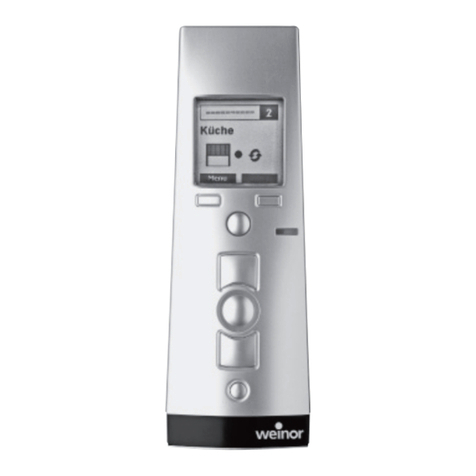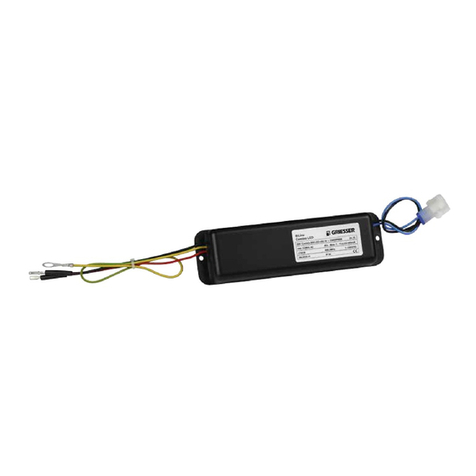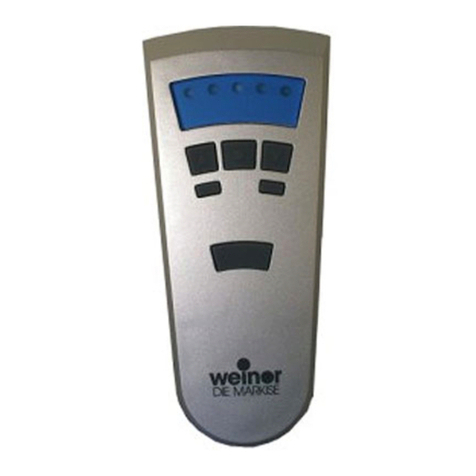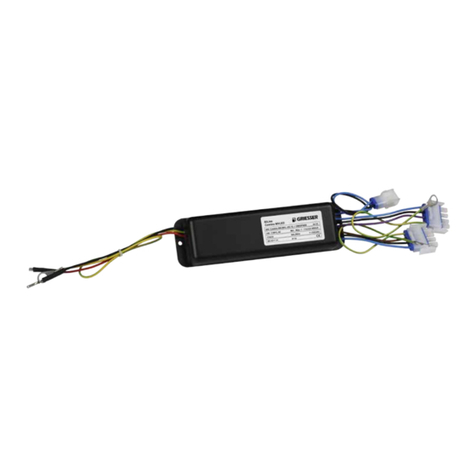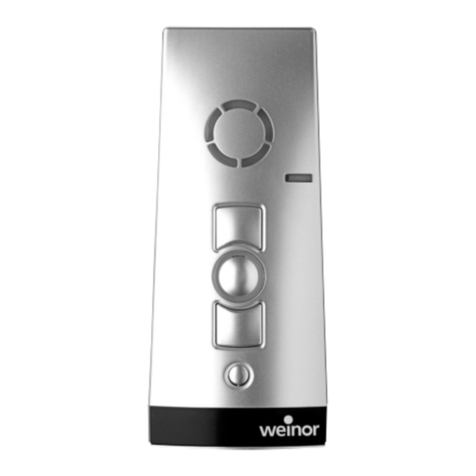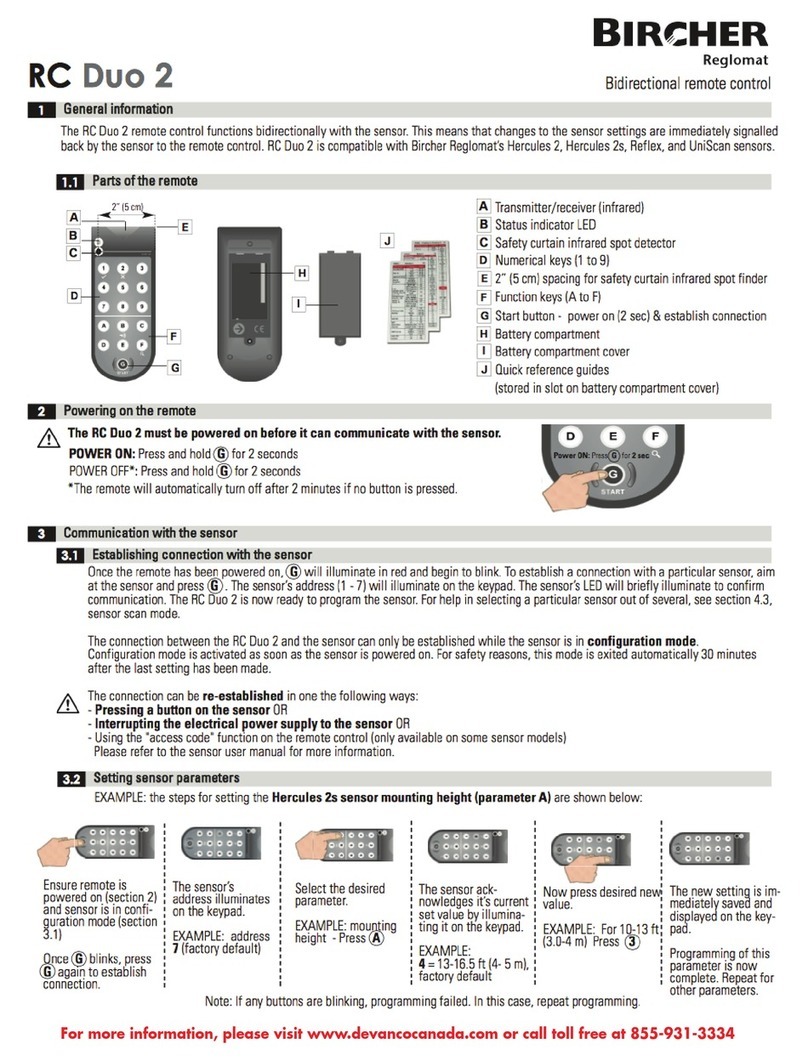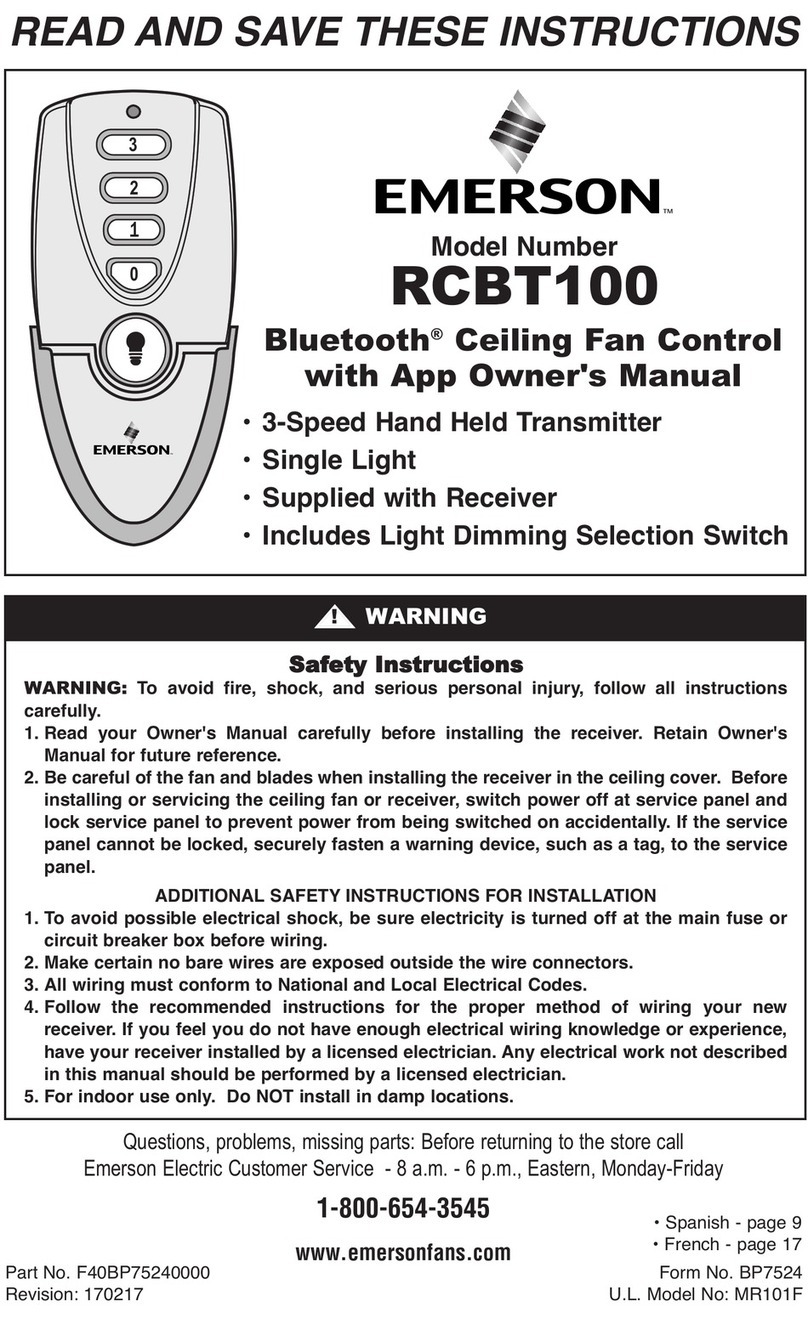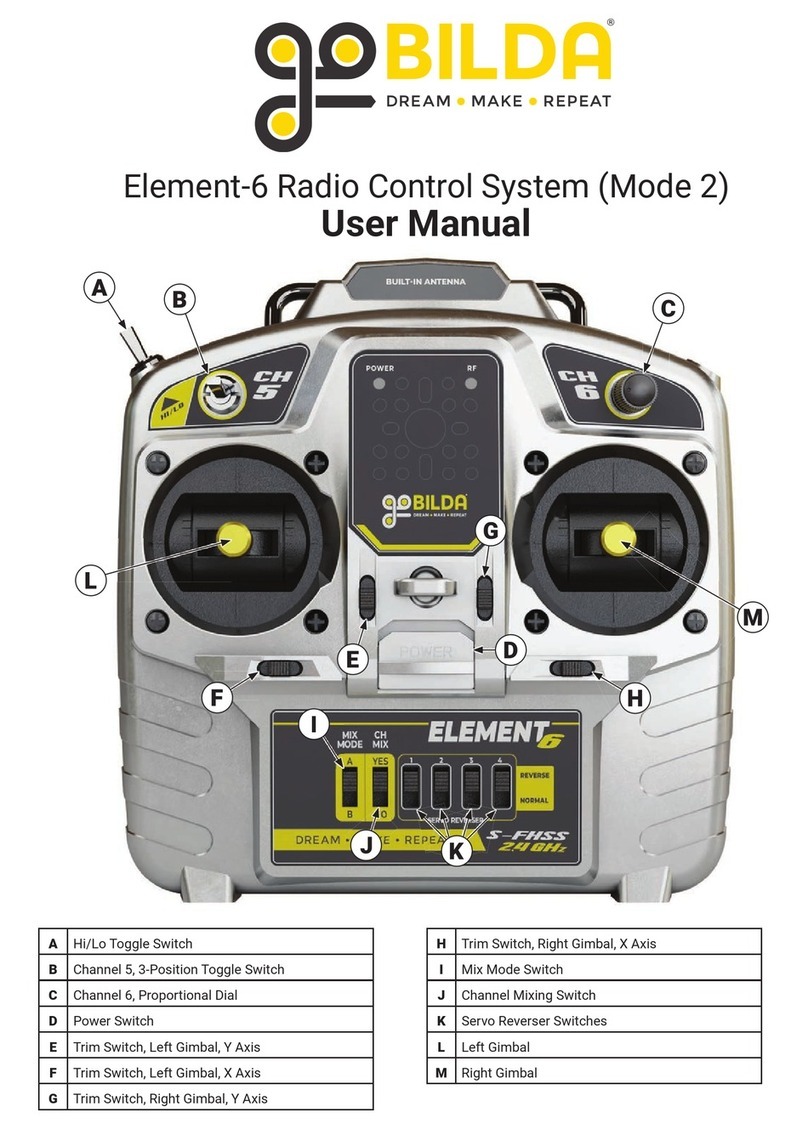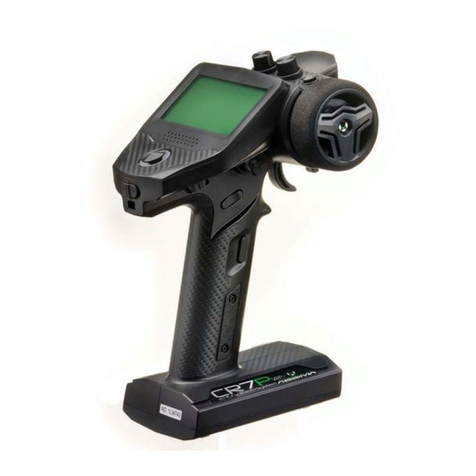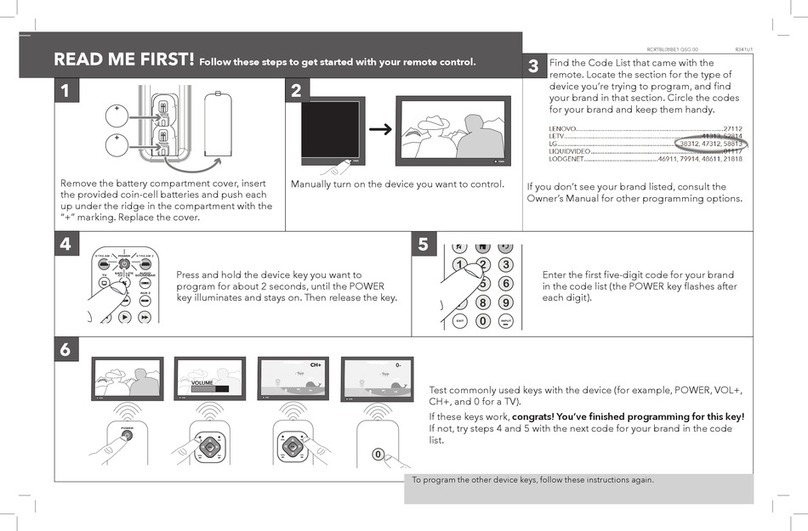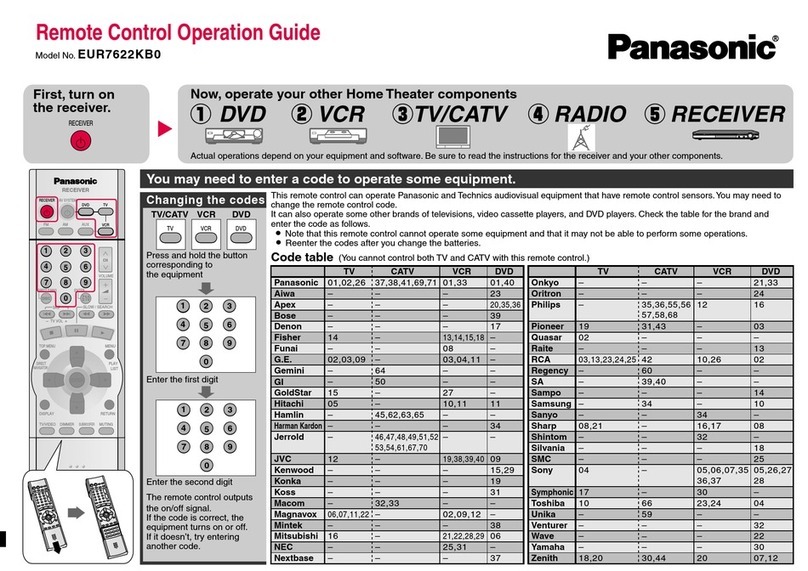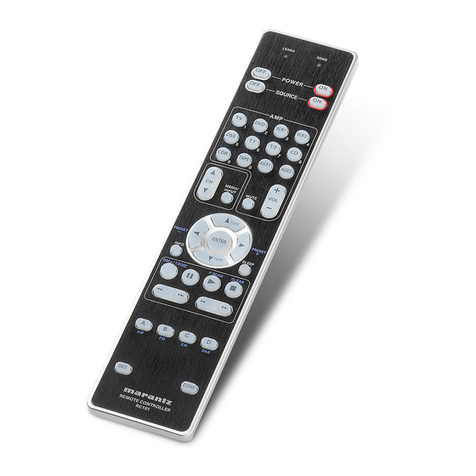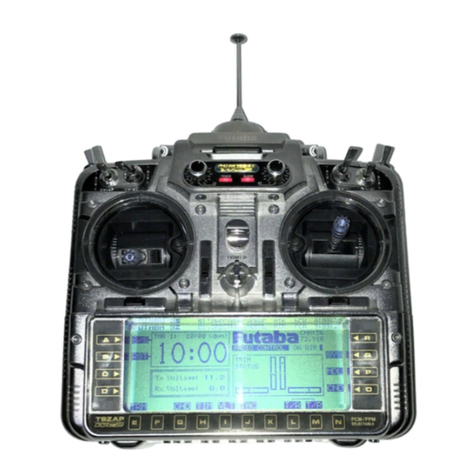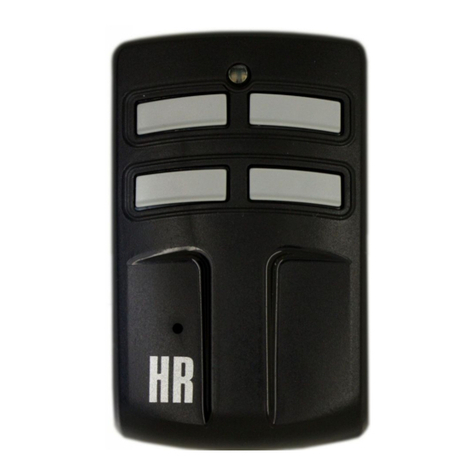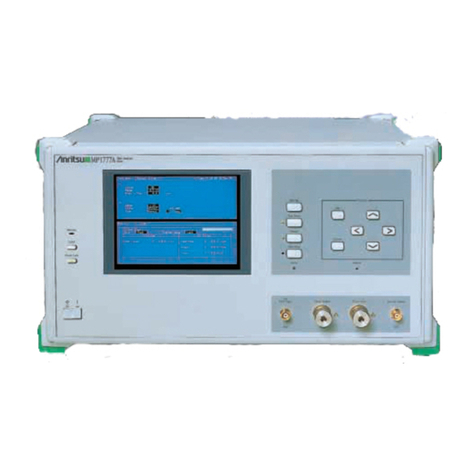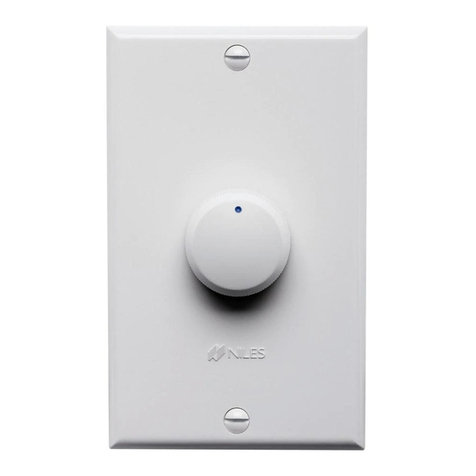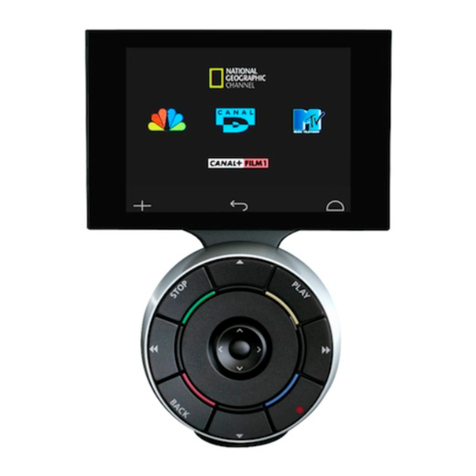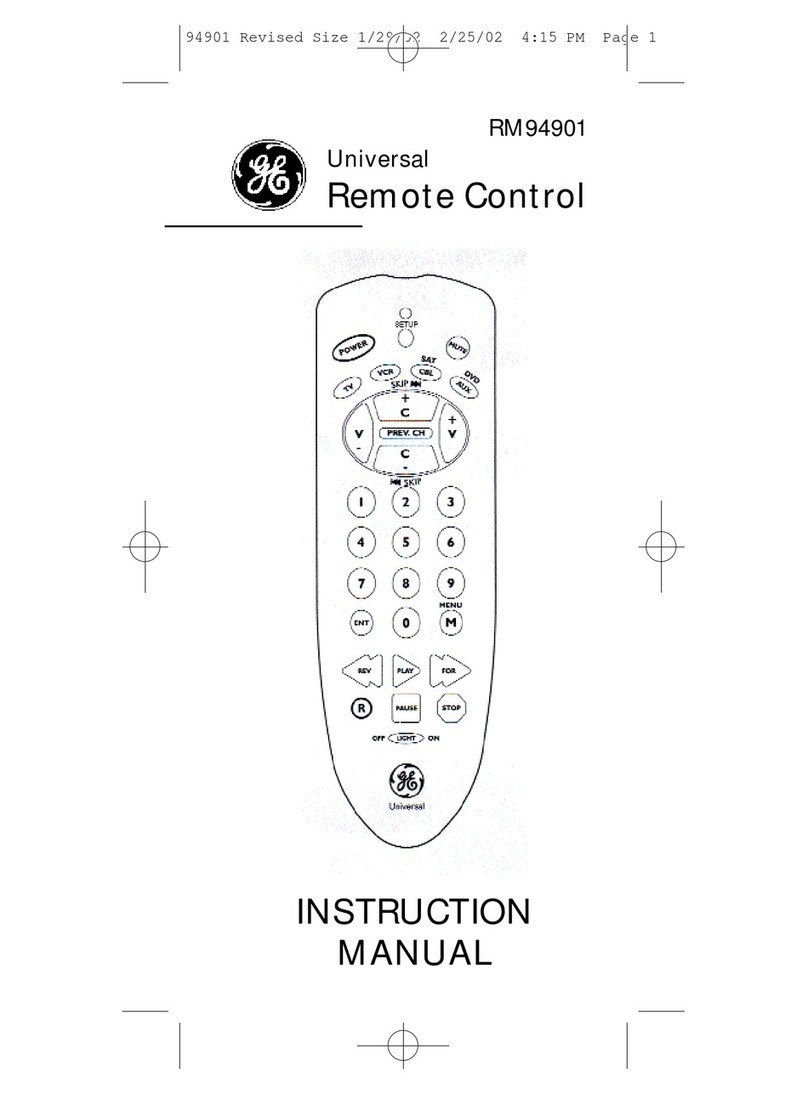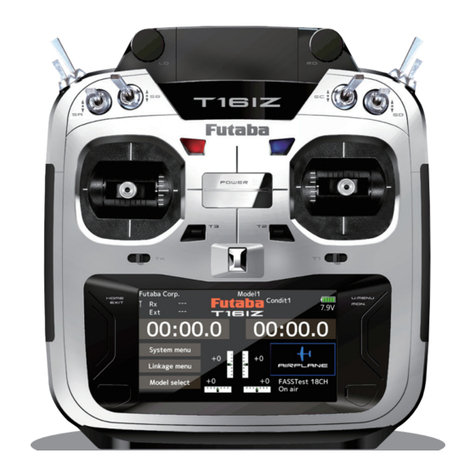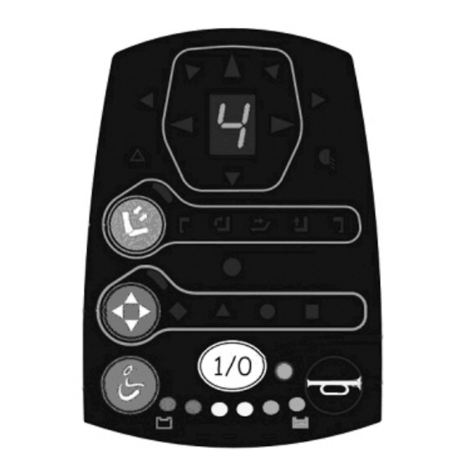© weinor GmbH & Co. KG10 | EN © weinor GmbH & Co. KG EN | 11
Selection button
Pressing the selection button briefly allows you to query the
current mode (automatic/manual) of the programmed receivers
(bidirectional receivers only) and the handheld transmitter channel.
Pressing and holding (for approximately 1 second) the selection
button switches automatic mode off. The operating mode indicator
lights up red. →The receiver now only carries out manual travel
commands and does not respond to automatic travel commands.
Note
Upward travel of the receiver is initiated when the automatic
system is activated.
Pressing and holding (for approximately 1 second) the selection
button switches automatic mode back on. The operating mode
indicator lights up green. →The receivers now execute automatic
and manual travel commands.
Programming the transmitter
Requirement
The receiver is installed. Check whether the channel has been
deleted.
Stand in front of the curtain to be programmed while programming.
1. Where electrical receivers have already been installed, switch
the circuit breaker off and on again after a few seconds.
The receiver is now in programming mode for about 5 minutes.
2. Press the programming button Pon the rear of the device briefly
(approximately 1 second) until the status display lights up briefly.
The curtain moves up and down for approximately two minutes,
showing that the receiver is in programming mode.
3. Press the UP button as soon as the curtain starts moving in
Open direction (within 1 second at the most). The status display
lights briefly.
The curtain stops briefly, travels further, stops and then travels in
the downwards direction.
4. Immediately (no more than 1 second) the curtain starts moving
downwards, press the DOWN button. The status display
lights up briefly. The curtain stops. The transmitter channel is
programmed.
Note
Programming will have to be repeated if the curtain does not
stop.
A bidirectional programming process in the handheld
transmitter can be cancelled by pressing the STOP button for
6 seconds.
Programming additional transmitters
Note
Where multiple receivers are connected to the same
supply, they are all simultaneously ready for programming for
approximately 5 minutes after connection to the mains.
If the Pbutton is now pressed on the transmitter, all receivers
start the programming mode simultaneously (ascents/
descents). An offset is created between the receivers by
randomly different pauses between the ascentsdescents. The
longer programming is delayed, the greater the offset will be.
The brief ascents/descents can be stopped by pressing the
STOP button briefly on a transmitter that has already been
programmed. The programming mode in the receiver is
interrupted.
The transmitter can now be assigned without having to
disconnect individual receivers. If the curtain moves in the
wrong direction, delete the transmitter and program it again.
(→see Deletion of transmitter)
To program additional transmitters to one receiver:
1. Press the UP, DOWN and programming P(rear of the device)
buttons simultaneously (for three seconds) on a transmitter
that has already been programmed to the receiver. The status
